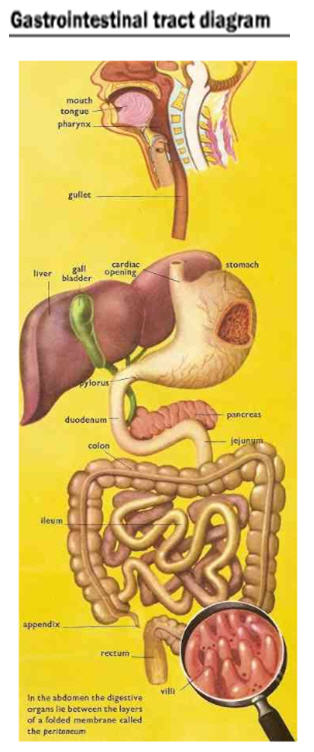The GI Tract: Understanding The Basic Plumbing
The gastrointestinal tract (GI) is responsible for processing food for absorption and expelling excess waste. Digestion first starts in the mouth where food is mechanically broken down and mixed with saliva, which begins the chemical breakdown process. The stomach is an extremely acidic environment where large molecules are broken down into smaller particles that will be easily absorbed by the small intestine.
The small intestine is the site for a great deal of chemical digestion as well as the primary segment of the GI for absorption. The small intestine walls are covered with structures called microvilli which allow for the absorption of 98% of digestible carbohydrates, 95% of all fat, and 92% of all protein consumed.
The first section of the small intestine is the duodenum and is the shortest section, measuring 25-30 cm. in length. This is the primary location for chemical digestion and is responsible for regulating gastric emptying. Once gastric chime (the food post-digestion in the stomach) enters the duodenum, secretin and cholecystokinin are released, triggering bile from the liver and gallbladder along with enzymes from the pancreas.
The middle section of the small intestine, the jejunum, is 2.5 meters long and is the location of the final chemical digestion process. Afterwards, nutrients and bile are adsorbed in the final segment called the ileum.
The large intestine is 1.5 meters long and completes the remaining digestive processes. Over 12-25 hours, any remaining minerals will be absorbed along with water. The chime is then packed into feces.


